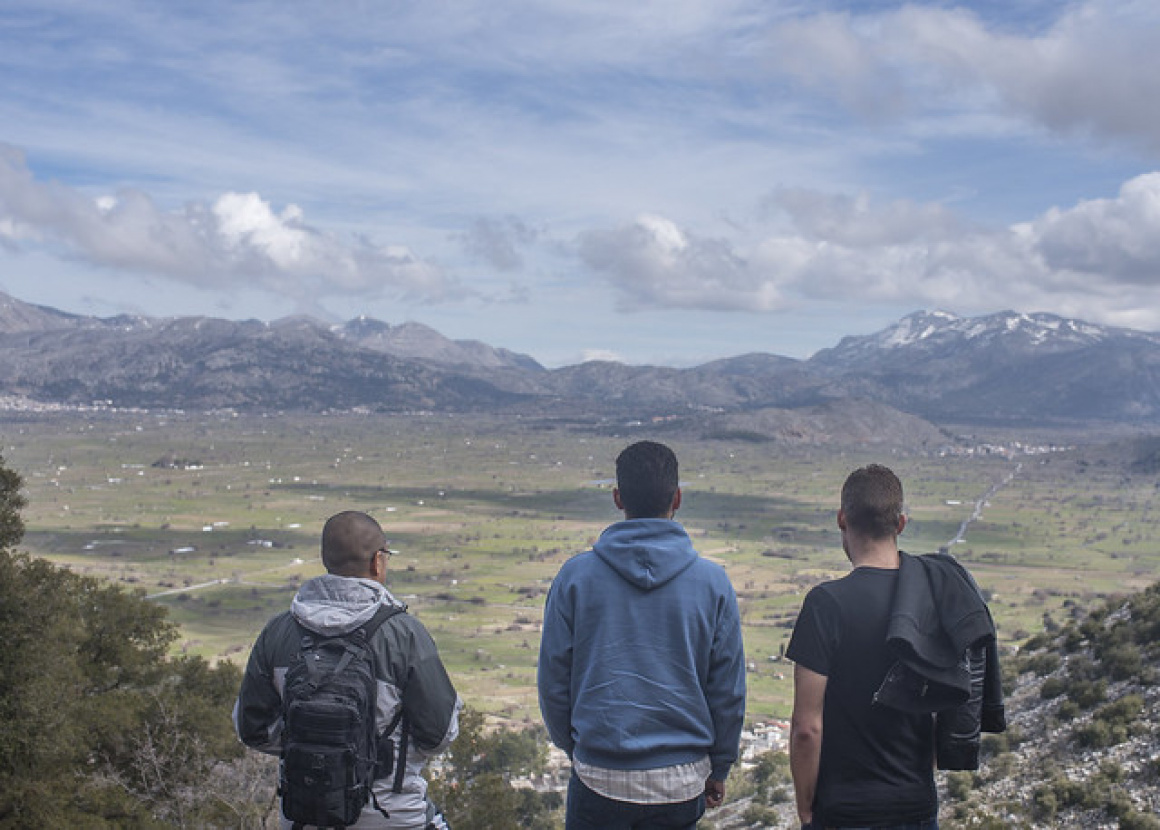Beyond its beautiful beaches, Crete offers a rich tapestry of tours and activities that cater to every interest – whether you're a history buff, nature lover, foodie, or adrenaline seeker. From hiking through breathtaking gorges to sipping local wines in a vineyard, from sailing the high seas to stepping back in time at ancient palaces, Crete has it all. This section serves as a comprehensive guide to the must‐do tours and activities on the island, complete with practical tips and personal insights to help you plan an unforgettable Cretan adventure.
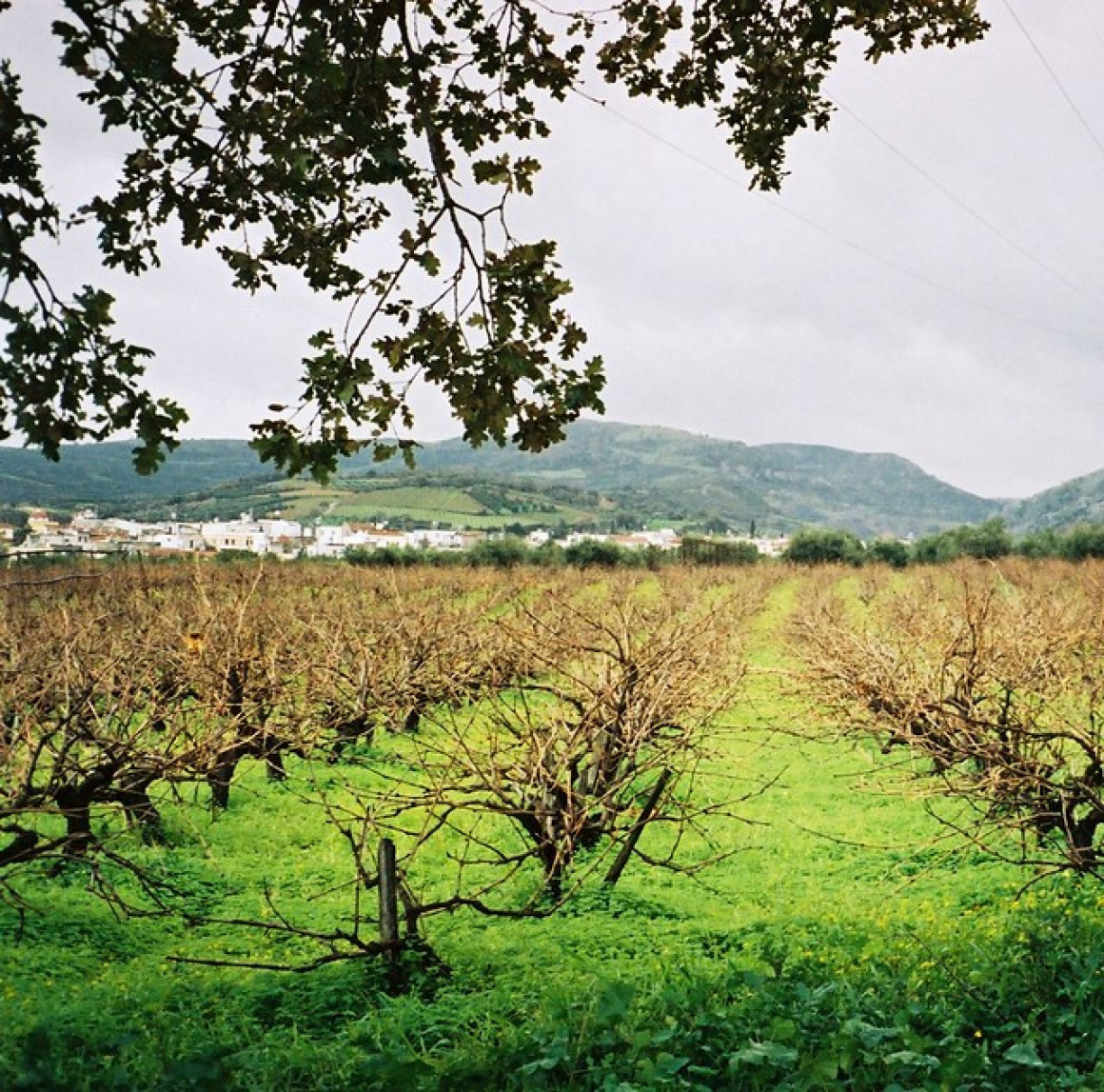
 'Vineyard Winter' - Attribution: We Love Crete
'Vineyard Winter' - Attribution: We Love CreteThe Many Sides of Crete
Crete is often described as a microcosm of Greece due to its sheer variety. In a single trip, you can go trekking in high mountains, explore deep caves, wander through Minoan ruins, learn traditional crafts in villages, and cruise to nearby islands. The island's large size, being the biggest in Greece, means there are diverse landscapes and a wealth of opportunities for organised tours or independent exploration. Importantly, the Cretans are proud and passionate about their land, and many local guides infuse their tours with personal stories, mythic tales, and genuine hospitality that make each experience feel special. Whether you prefer a guided group tour for convenience or a self‐drive itinerary for freedom, it's good to know the top highlights and how best to enjoy them. Let's break down the must‐do activities by category.
Hiking Adventures
If you love the outdoors, hiking in Crete is a must.
Samaria Gorge Trek
The Samaria Gorge is the longest gorge in Greece (about 16 km from the trailhead to the coastal exit) and has been a national park since 1962. As you hike down from the trail start at Xyloskalo (1,230 m elevation) in the White Mountains, you'll be immersed in nature – pine forests giving way to a rocky riverbed flanked by soaring cliffs. The highlight is reaching the narrowest pass, the “Gates,” where the walls are only 4 m apart and tower 300 m above, making the walk through this slot truly epic. The gorge is also home to the kri-kri (wild Cretan ibex), and you might spot one perched on a crag or nibbling foliage by the abandoned village of Samaria inside the gorge.
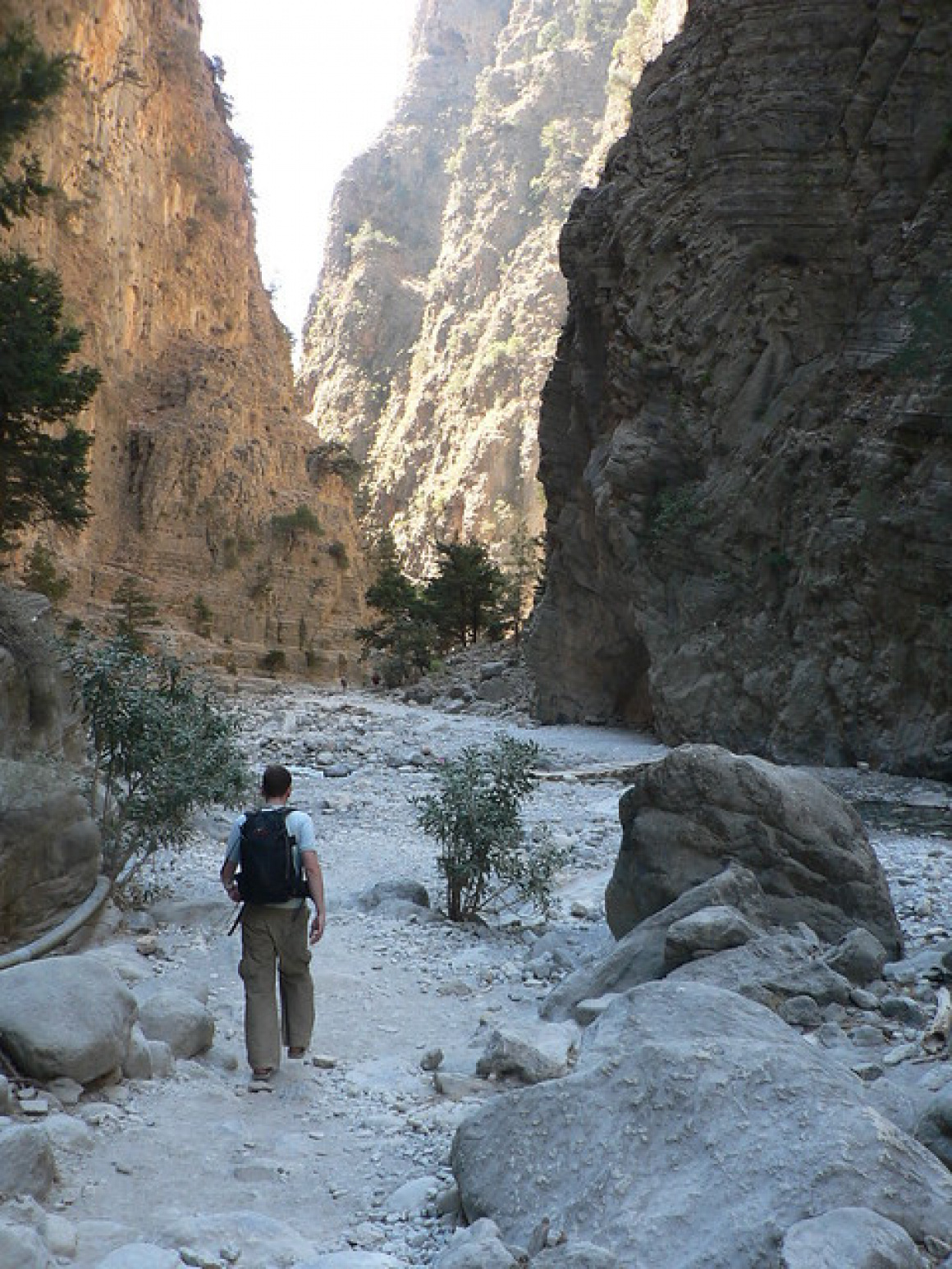
 'Along Samaria Gorge' - Attribution: lostajy
'Along Samaria Gorge' - Attribution: lostajyPractical tips:
The hike is one-way, so most people take a tour or use the public bus to Omalos, hike down to Agia Roumeli, then catch the ferry out (to Chora Sfakion or Sougia) and transfer back by bus. Organised tours make this logistics easy by providing the bus and ferry tickets in one package. It's a long but manageable hike if you're reasonably fit – expect 5-7 hours of walking plus rest stops. Wear good shoes, as the terrain is rocky, and start early (tours often depart before dawn from resorts) to avoid crowds in the narrow parts. By the time you finish, you'll be tired but exhilarated, and as mentioned in the Beaches section, a dip in the Libyan Sea at Agia Roumeli is the perfect reward!
Imbros Gorge
Imbros Gorge, a shorter and easier alternative to Samaria, is in the same region but only about 8 km long and can be hiked in 2-3 hours. It's still incredibly scenic, with sections where the cliff walls almost meet overhead. Because it's less strenuous, Imbros is suitable for families or those not up for the Samaria marathon. The hike starts near the village of Imbros and ends at Komitades, near Chora Sfakion. An added bonus is that Imbros has fascinating World War II history, as Allied soldiers retreated through here to Sfakia in 1941. You can do Imbros independently – there's a small entrance fee and taxis available at the bottom to take you back up – or as part of a tour that often includes a visit to a village or Sfakia. Insight: The ambience in Imbros is quieter, with far fewer hikers than Samaria, especially if you go early. If you're lucky, you might have long stretches to yourself with just the sound of crickets and your footsteps echoing in the gorge.
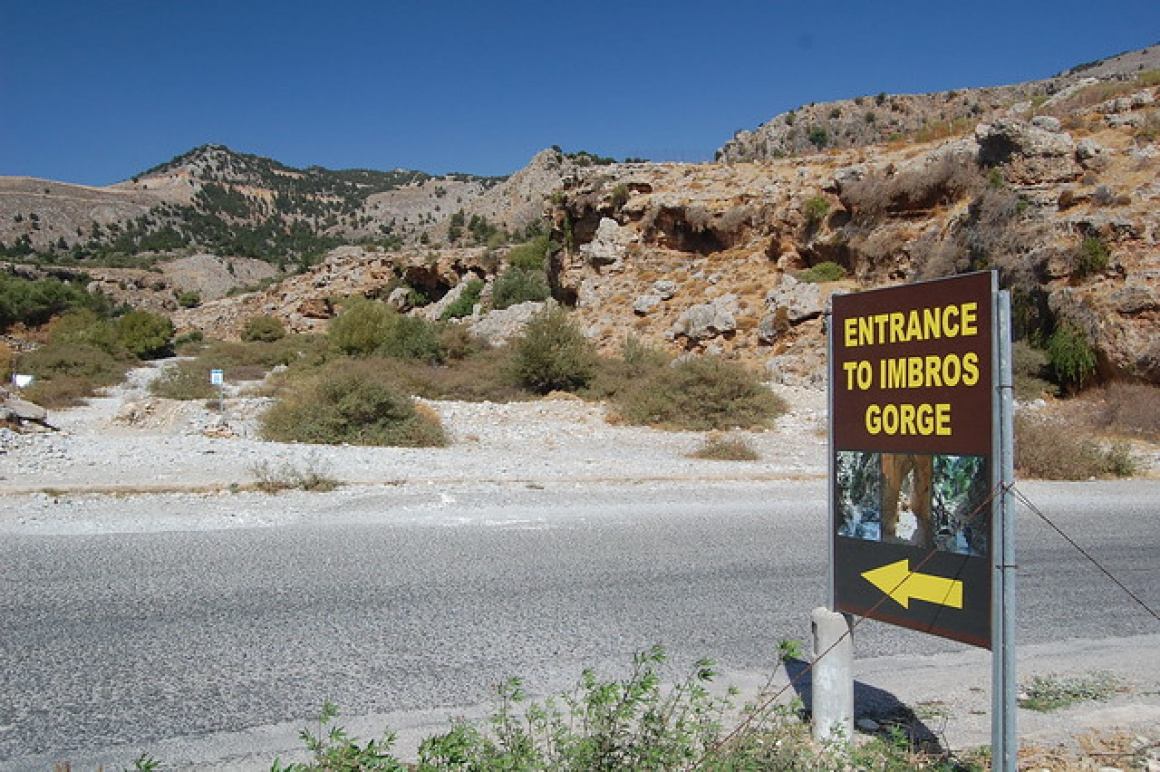
 '2013 10 13_crete_0071' - Attribution: Pete McClymont
'2013 10 13_crete_0071' - Attribution: Pete McClymontMountain Summit Hikes
Crete's mountains offer rewarding peak hikes. If you're a peak-bagger, consider summiting Mt. Psiloritis (Idi), Crete's highest at 2,456 m. On a clear day, the 360-degree views from the top are astounding – you can see both the Cretan Sea to the north and the Libyan Sea to the south, with nearly the whole island spread out before you. There's even a small stone chapel of Timios Stavros (Holy Cross) at the summit where hikers leave offerings. The usual route is from the Lakkos Mygerou refuge, which is accessible by road from Anogia. It's a non-technical but steep hike (allow 3-4 hours up, 2-3 down). Guided excursions are available, or you can self-hike with adequate preparation, starting very early in summer to avoid the heat. Another great climb is Mt. Dikti (2,148 m) in Lasithi, often combined with an off-road jeep approach and then a hike – this one gives you a vantage over the Lasithi Plateau's famous windmills. Keep in mind, weather in the high mountains can be cool and unpredictable, so always bring layers and check conditions.
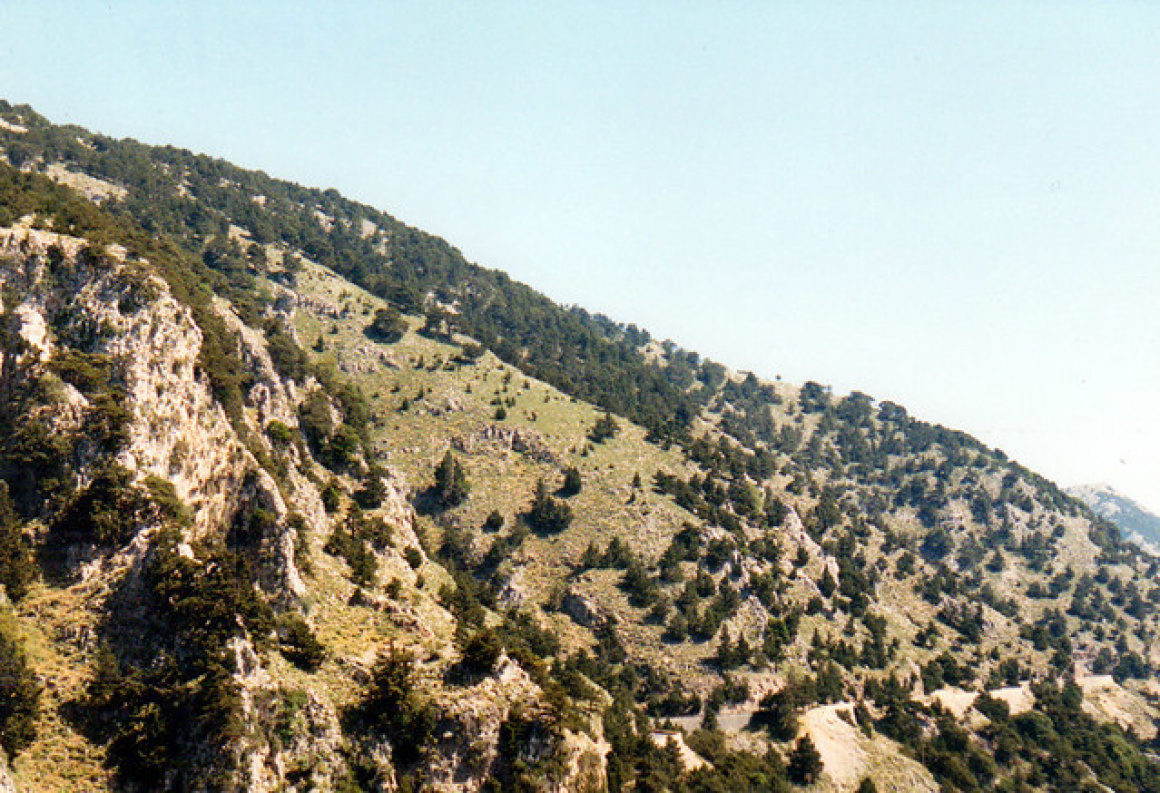
 'Imbros Gorge, Crete' - Attribution: Roly-sisaphus
'Imbros Gorge, Crete' - Attribution: Roly-sisaphusCoastal and Rural Walks
Not all hikes in Crete are through gorges and up peaks. The island is crisscrossed by the E4 European long-distance trail, which in Crete runs from west to east. Portions of the E4 make for fantastic day walks. For instance, the coastal hike from Loutro to Agia Roumeli (or further to Sougia) offers turquoise sea vistas at every turn and passes tiny beaches like Marmara and Likos – you can even plan it so you hike one way and ferry back. In central Crete, a lovely easy hike is from Archanes, a wine village, up through farmland to Mt. Giouchtas, a small mountain with a profile that, according to legend, resembles Zeus's face in repose. It's said to be Zeus's tomb (though another legend places Zeus's birthplace in a cave on Dikti – legends abound here!). Mt. Giouchtas boasts interesting flora, panoramic views, and the remains of a Minoan sanctuary at its summit. Practical tip: Hiring a local guide or joining a small hiking group can enrich these experiences, as they'll show you herbs you can pick, share myths, and ensure you don't get off track on unmarked trails.
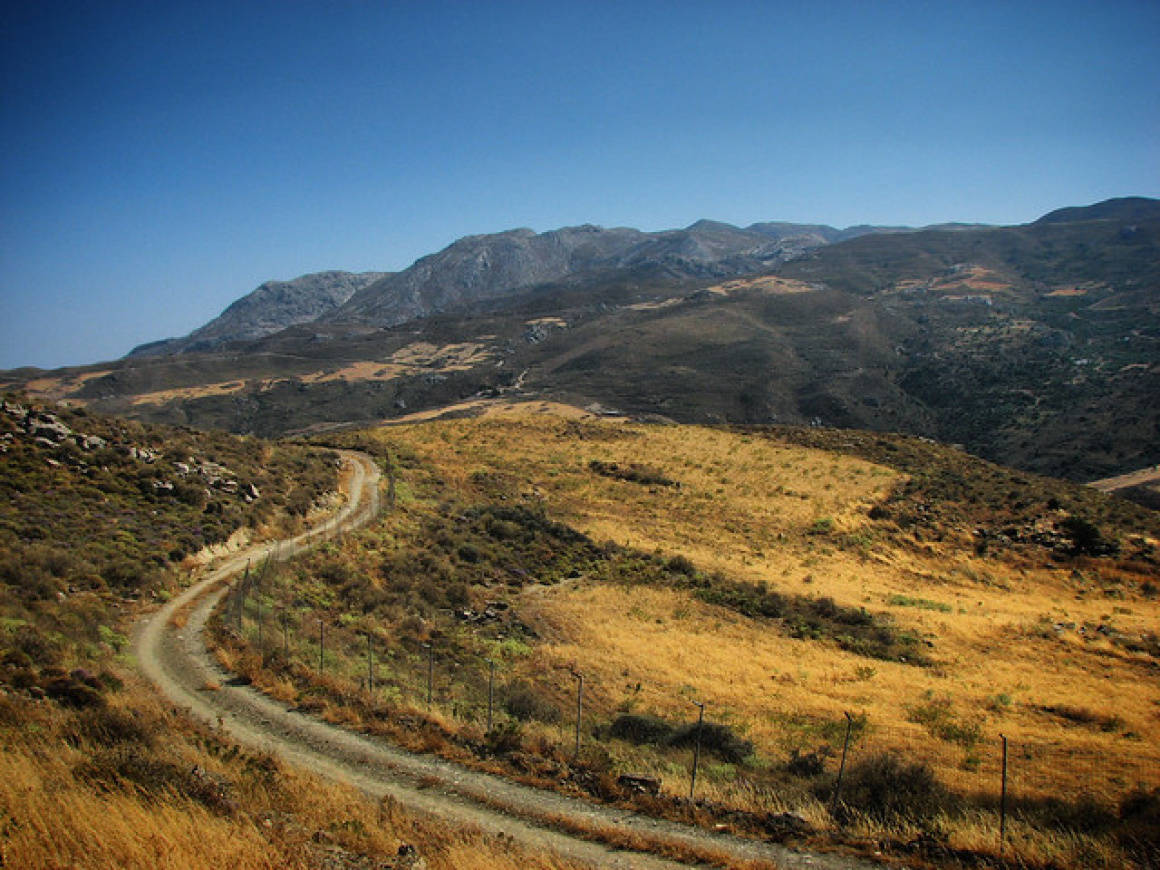
 'Road in the mountains of Crete, Greece, June 2008' - Attribution: sergei.gussev
'Road in the mountains of Crete, Greece, June 2008' - Attribution: sergei.gussevCultural & Historical Tours
Crete's history spans millennia – it was home to one of Europe's earliest civilisations, the Minoans, and later experienced Classical Greek, Roman, Byzantine, Venetian, and Ottoman influences. To dive into this rich heritage, consider tours that bring the past to life. Knossos Palace, the largest Bronze Age archaeological site in Crete, is a must-visit for history enthusiasts. This was the centre of the Minoan civilisation (circa 2000-1400 BC) and is linked to legends like King Minos, the Labyrinth, and the Minotaur. Walking through its ruins, you can imagine the bustling courtyards and grand throne room of Europe's oldest city. Many areas were controversially reconstructed by archaeologist Arthur Evans, with some rooms restored with colourful frescoes and red columns, giving a vivid (if speculative) sense of how it looked. A guided tour of Knossos Palace is highly recommended, as the site's layout can be confusing and much more meaningful with explanation. Knowledgeable guides point out key features – the throne room with its stone seat, the Queen's megaron with the famous dolphin fresco, the storage magazines still containing pithoi that once held olive oil and wine, and the central court where ceremonies took place. After exploring Knossos, complement the experience with a visit to the Heraklion Archaeological Museum, which houses original artefacts from the site.
Spinalonga Island
Off the coast of Elounda in north-east Crete, Spinalonga is a small island with a big history. It was once a Venetian fortress and, later, famously a leper colony from 1903 to 1957. Taking a guided boat tour to Spinalonga Island is a journey into that poignant past. Typically, boats depart from Plaka village (the shortest crossing, 5-10 minutes) or from Agios Nikolaos/Elounda, offering beautiful sea views. On Spinalonga, guided tours walk you through the ruins of the leper settlement – exploring the main street with abandoned houses, the church, and the hospital. Stories of the patients' lives, their resilience, marriages, and eventual evacuation once a cure was found, truly make the visit moving. The Venetian element gives it a picturesque side, with ancient sea walls and old cannons overlooking the waves. Insight: Ask your guide about the novel "The Island" by Victoria Hislop to add emotional context to your visit. A guided tour is invaluable in navigating crowds and ensuring you catch the return boat on time.
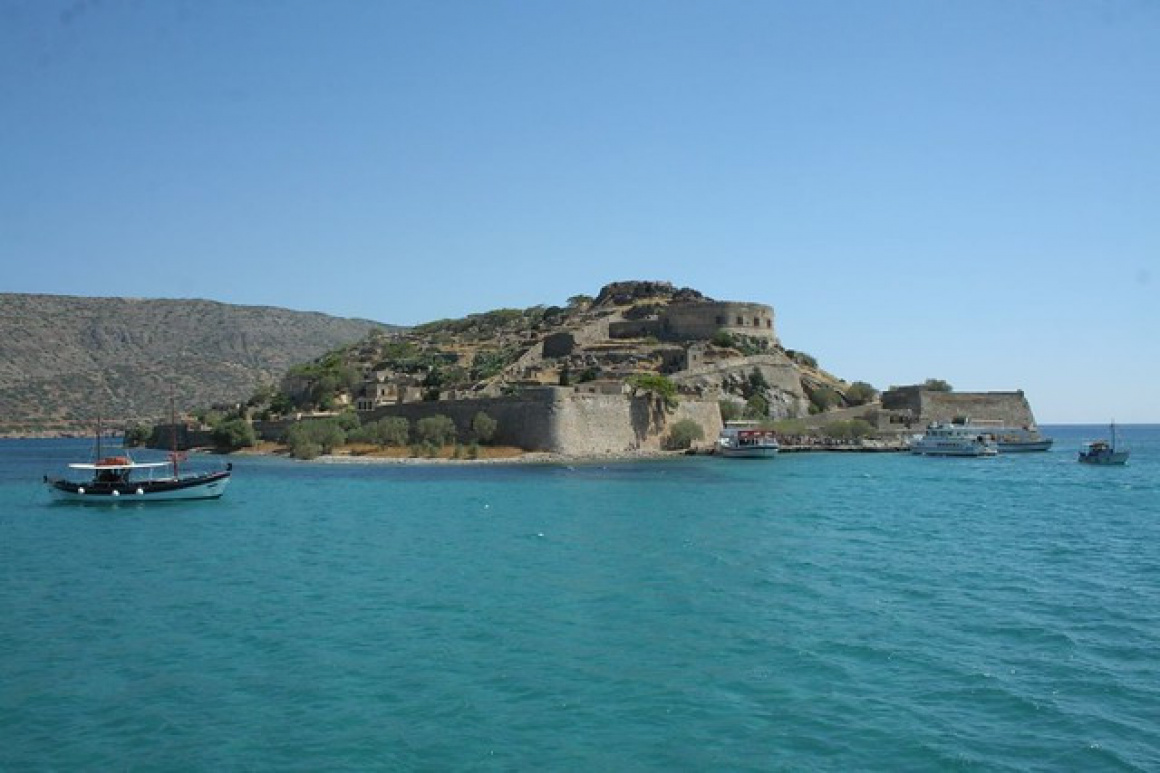
 'Spinalonga' - Attribution: Marek Bakajsa
'Spinalonga' - Attribution: Marek BakajsaRethymno Old Town Walking Tour
Rethymno is like an open-air museum of Renaissance and Ottoman architecture. A guided walking tour through Rethymno Old Town reveals sultans' houses, Venetian loggias, and hidden courtyards behind ornate doorways. As you stroll the narrow streets, you'll encounter the Fortezza – the star-shaped 16th-century fortress offering panoramic views – the Neratze Mosque (formerly a Venetian church, now a music hall with a tall minaret), and the Rimondi Fountain adorned with lion heads where travellers once refreshed themselves. Guides often share fascinating anecdotes, such as how nobles fled into these alleys to escape pirates, or point out where to buy the best baklava. This tour can also include visits to local craft workshops, where you might see phyllo pastry makers or woodcarvers in action. If timed in the late afternoon, you can finish with a lovely sunset over the harbour, perhaps followed by dinner at a tavern recommended by your guide.
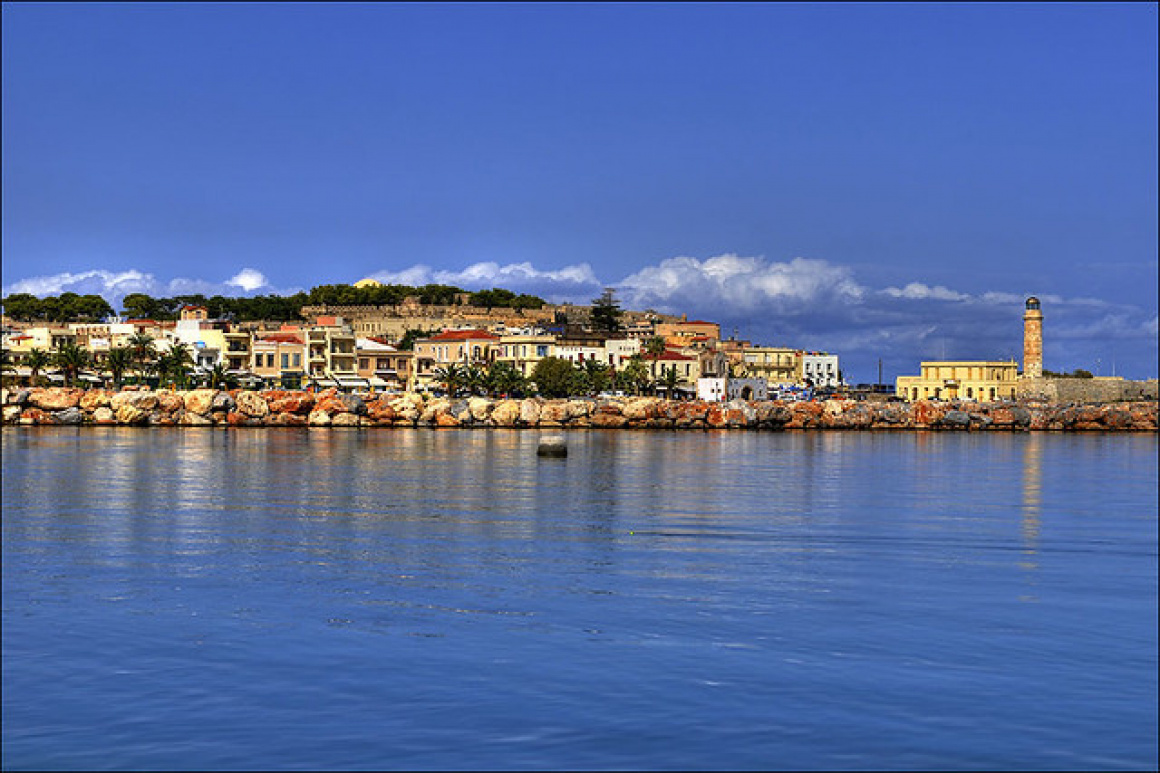
 'skyline of Rethymno' - Attribution: Romtomtom
'skyline of Rethymno' - Attribution: RomtomtomChania Food & Wine Tour
For a mix of culture and cuisine, consider a food tour in Chania, Crete's westernmost large town. These tours typically involve a local guide leading you through Chania's atmospheric Venetian quarter and bustling market, with delicious stops along the way. You might start at the Municipal Market sampling local olives, graviera cheese, and dried figs, then wander through back lanes to a centuries-old bakery for freshly baked kalitsounia (Cretan cheese pies with honey). In between bites, you'll learn about Chania's layered history under different rulers and see landmarks such as a Turkish hammam or the old synagogue in the Jewish quarter. Many tours also include a sit-down mezze and wine tasting, where you sample Cretan dishes like dakos (barley rusk salad) and local varietals such as Vilana white or Kotsifali red. A highlight is often tasting raki (tsikoudia) in a small kafeneion, where guides demonstrate the proper Cretan way to drink it. This tour offers a rich blend of cultural history and culinary delight.
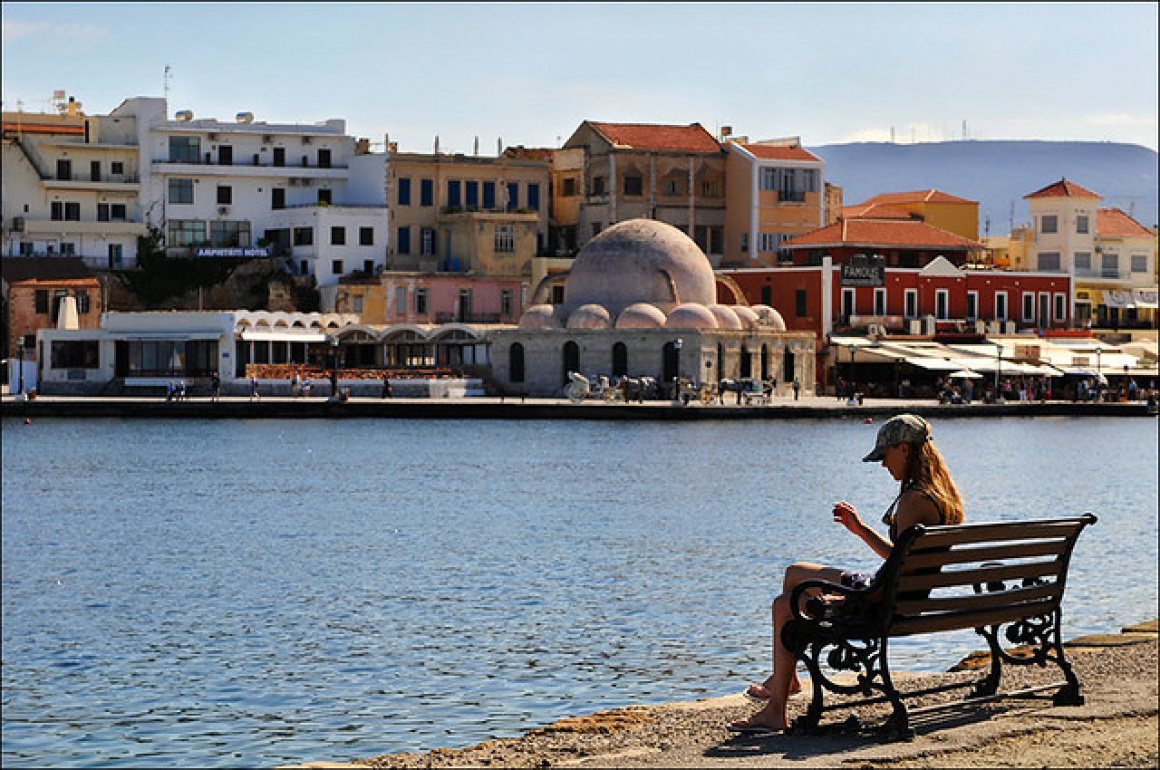
 'skyline with mosque of chania' - Attribution: Romtomtom
'skyline with mosque of chania' - Attribution: RomtomtomTraditional Village Tours & Experiences
To truly feel the heartbeat of Crete, venture into its traditional villages. Tours take you to places like Anogia or Zaros – mountain villages renowned for their crafts and warm hospitality. In Anogia, famous for its weaving and music, you might visit a family home where a grandmother demonstrates her weaving on a loom while a grandfather plays a tune on his lyra, all while you sample homemade cheese and bread. In the rural foothills near Heraklion, some tours offer a Cretan cooking class where you learn to make dishes such as dolmades (stuffed grape leaves) or lamb with wild greens pie under the guidance of local women. It's a hands-on experience that culminates in a shared feast. Similarly, an olive oil farm tour reveals the secrets behind Crete's celebrated olive oil production, with opportunities to pick olives in season, watch traditional pressing methods, and taste various oils. Many village tours conclude with a folklore show featuring traditional dancing and music, often paired with a hearty country dinner and copious local wine. Personal insight: One of my fondest memories is attending a small village panigiri as part of a tour, where we were welcomed like family, danced in a circle to the sounds of a lyra and laouto, and left with a heartfelt connection to Crete's legendary philoxenia.
Wine Tasting & Culinary Experiences
The majority of Crete's vineyards and wineries are in the Heraklion region, particularly in the Peza and Dafnes wine districts south of the city. In fact, about 70% of Crete's wine comes from Heraklion prefecture, with the fertile valleys around Peza leading the way. A typical wine tour here will take you through rolling hills of vines to two or three wineries. For example, you might visit Lyrarakis Winery, a family estate known for reviving rare Cretan grape varieties. There, you tour the facilities, stroll among the vines, and taste a flight of wines – from a crisp Vidiano, an aromatic white, to a robust Mandilaria, a red, often paired with local cheese. Another excellent stop is Douloufakis Winery in Dafnes, which produces a divine oak-aged Vidiano and a spicy red Liatiko. Guides and vintners explain the nuances of indigenous grapes like Vilana, Thrapsathiri, and Kotsifali, while also illustrating how Crete's climate, with plenty of sun and cool nights in higher elevations, shapes the wines' character. Insider tip: Ask about the Romeiko grape if you visit Chania's Manousakis or Karavitakis wineries – Romeiko can produce a fascinating sherry-like sweet wine that is a Chania speciality. Many tours also include an alfresco lunch at a winery or countryside tavern so you can savour the experience with home-cooked Cretan dishes. If you do not have a car or designated driver, joining an organised wine tour or hiring a private driver-guide is a smart and safe option.
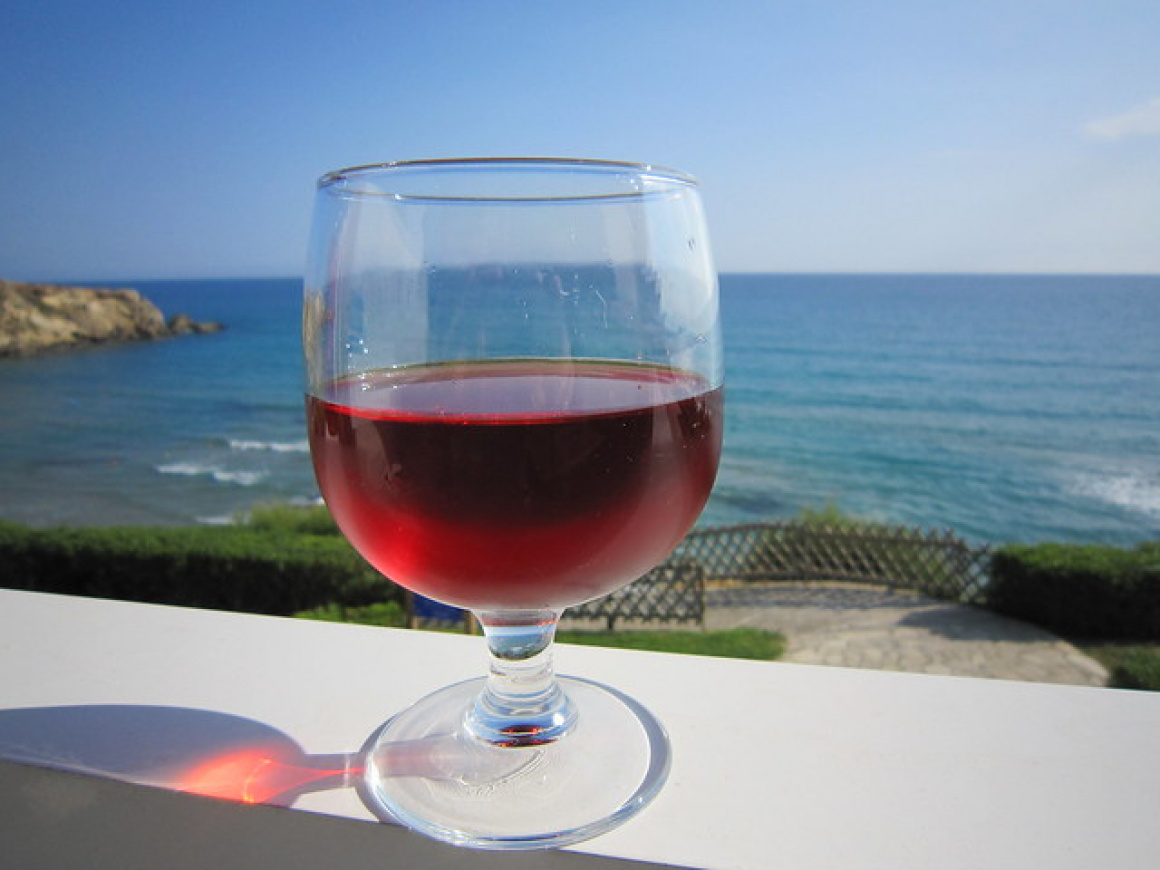
 'Rose wine' - Attribution: Signe Karin
'Rose wine' - Attribution: Signe KarinOlive Oil Tasting & Farm Visits
As central as wine is, olive oil is the lifeblood of Crete. Visiting an olive farm or mill explains why Cretan olive oil is so revered. Many tours combine winery visits with stops at olive oil producers, showcasing both agricultural highlights. Near Heraklion, for example, you might see a modern olive press where the miller explains the pressing process. You'll learn how to taste olive oil properly – taking a small sip, inhaling its aroma of cut grass or artichoke, and noting the bitter and peppery pinch that indicates quality. High-polyphenol olive oil is a point of pride here, as it is super healthy and full of flavour. Some tours offer a hands-on farm experience, including picking vegetables from an organic garden or even joining a family to bake bread in a wood oven. A popular visit is at Astrikas Estate/Biolea in the Chania region, where stone-milled, cold-pressed organic olive oil is produced and tasted in a charming old manor setting. Practical tip: Bring some cash along, as you will almost certainly want to purchase a bottle of extra virgin olive oil, a jar of thyme honey, or some herb tea as a genuine souvenir.
Cretan Cooking Classes
Cretan cooking classes are a wonderfully engaging activity, especially for food lovers. These classes take place in village homes, elegant old farmhouses, or even winery estates. Typically, a small group or private session is led by a local cook – whether an experienced chef or a charismatic Greek yiayia working with the aid of a translator. Over several hours, you'll prepare a variety of dishes using fresh local ingredients: perhaps rolling out dough for cheese pies, stuffing tomatoes and peppers with herbed rice (gemista), slow-cooking goat or beef with tomatoes or avgolemono, and whipping up a village salad with juicy tomatoes, cucumbers, and creamy feta. You might also learn to make tzatziki or the ubiquitous dakos. The best part is sitting down together to feast on your creations, often accompanied by free-flowing wine or raki and plenty of laughter. In the process, you absorb local culture, hearing family recipes and stories about how certain dishes are linked to festivals or seasonal traditions. Many participants later recreate the recipes at home, instantly reminded of Crete. Additionally, vegetarians will be pleased to know that Cretan cuisine is rich in vegetable dishes – such as boureki (a zucchini and cheese bake) or horta made from wild greens – so classes can easily accommodate non-meat diets.
Street Food Strolls & Farmers Markets
In cities like Heraklion or Chania, a guided stroll through the food markets is a delight. Heraklion's central market street (1866 Street) is a sensory explosion of spices, fresh produce, fish, meats, and baked goods. A knowledgeable guide will introduce you to speciality items, such as a slice of bougatsa, a serving of loukoumades, or a cup of Greek coffee brewed the traditional way on hot sand. You might also visit an old herb shop selling mixes of mountain tea, oregano, and sage. These tours not only fill your stomach but also provide insight into everyday Cretan life and traditions. For coffee enthusiasts or craft beer lovers, there are even specialty tours available, as Crete's craft beer scene is slowly growing in both Chania and Heraklion. Meanwhile, a guide can educate you on the differences between a frappe, a freddo espresso, and a Greek coffee cooked in sand, making every sip part of the cultural experience.
Boat Trips & Sea Adventures
One of the most popular excursions is a day cruise to Balos Lagoon and Gramvousa Island. These trips typically depart from Kissamos Port in the morning. The boat ride along the rugged Gramvousa peninsula is scenic, and if you're lucky, dolphins may even surf the bow wave. The first stop is usually Gramvousa, a small island with a Venetian fort perched high above. You can hike up to the ruined fort – roughly a 20-minute uphill walk – for a breathtaking view of the Balos lagoon's unbelievable shades of blue. Below, there's a charming beach where the shipwreck of a rusty boat lies in the shallows, making it a great spot for a quick snorkel or photo op. On board, many cruises include a buffet-style lunch. Next, the boat anchors at Balos Lagoon itself, giving you a couple of hours to explore and swim. Wade through the warm lagoon, walk to the small islet of Tigani, or snorkel along the rocks. Tip: Bring reef-safe sunscreen and water shoes, as the sand can be hot and there are areas with sharp rocks. Even on a guided tour, try to wander a bit away from the main crowds for the best experience. The boat returns by late afternoon, making this a must-do if you prefer a boat trip over a long hike while still enjoying postcard views.
Santorini Day Trip
A very sought-after, though long, excursion from Crete is a day trip to Santorini. High-speed ferries make this possible in a single day. Tour companies offer packages that depart from Heraklion or Rethymno in the morning, zip across the sea in a catamaran for about 2 hours, and then let you spend the day on Santorini. Once there, you are taken by bus up the steep caldera cliffs to the town of Oia, where you get that classic view of white houses and blue domes clinging to the cliffside. You'll have free time to meander through Oia's narrow alleys, purchase a few souvenirs, or simply take countless photos of the caldera and the expansive Aegean. The tour often continues to Fira, the capital, for more sightseeing or a lunch with a volcano view. Some packages even offer a short stop at a viewpoint or a visit to the black sand beach at Perissa, though time is limited. By early evening, you are brought back to the ferry port for your return journey. My advice: Opt for a package that includes a guided tour on Santorini so you can learn about its history and context, and be prepared for an early start and a late return. Many find the day trip worthwhile for the bragging rights of “doing Santorini” from Crete, but manage your expectations as you won't catch a sunset and the areas tend to be crowded.
Chrissi Island Cruise
On the south coast near Ierapetra, a delightful day cruise takes you to Chrissi Island. This tiny, uninhabited island, about 15 km offshore, is famed for its Caribbean-like features: powdery white sand, crystal-clear shallow waters, and a beautiful juniper tree forest. The ferry ride from Ierapetra takes less than an hour, and as you approach Chrissi, the vivid emerald colour of the sea immediately captivates you. Boats typically dock at the island's north side, but the most spectacular spot is Golden Beach on the opposite side – a short walk across the island reveals a surreal panorama where white sand meets clear aquamarine water dotted with ancient bleached shells. Often dubbed “the Caribbean of Crete,” Chrissi offers opportunities to swim, snorkel (with plenty of fish around), or simply sunbathe. Note that Chrissi is a protected area, so please refrain from removing shells or harming the juniper trees. There is usually a small cantina or lunch may be provided on board, but shade is limited – so bring a hat or umbrella. The calm, shallow waters also make it an ideal spot for families.
Other Island Excursions
Crete's location also allows for day trips to other nearby islands. One unique excursion is to Gavdos, the southernmost island of Europe. Although it involves a long ferry ride of around 3-4 hours from Sfakia, Gavdos offers secluded beaches and a raw, natural ambience – it is better suited for an overnight stay, though some accept day tours with an early ferry, a local bus ride to the main beach (Sarakiniko or Agios Ioannis), a quick swim, and then a return trip. Closer to Crete, Elafonisi is actually connected by a sandbar, so it isn't classified as a boat trip per se. Dia Island, just north of Heraklion, is another small islet where many boat tours go for snorkeling and fishing; Cousteau reportedly noted that its shape resembled an ancient seahorse. It's a low-key outing, popular with those who enjoy fishing trips or a quiet sail, as Dia is rather barren though the surrounding waters are excellent for fishing – some tours even grill your catch on board.
Sailing and Boat Rentals
If group tours aren't your preference, consider renting a boat or joining a small-group sailing trip. Many harbours in Chania, Rethymno, Heraklion, or Agios Nikolaos offer day-sailboat charters where a skipper takes a small group out for a coastal sail. These experiences are intimate, allowing you to glide under billowing sails, learn some basics of sailing, drop anchor in a secluded bay for a swim, and enjoy lunch on deck. A sailing trip off Chania might take you to Theodorou Island, known for its kri-kri goats, or around the Drapano peninsula. From Agios Nikolaos, you can sail the Gulf of Mirabello, with stops at Kolokytha Bay and views of Spinalonga from the water. The relaxed vibe on sailboats makes it easy to sunbathe, read a book, or chat with the skipper about local tales. If you're with friends, renting small motorboats or RIBs to explore at your own pace is also an appealing option, keeping in mind to be mindful of winds and fuel.
Diving and Snorkeling Trips
Crete's underwater world beckons divers and snorkellers alike. If you're certified – or even if not, as many dive shops offer “try dives” for beginners – consider joining a dive tour. The clear waters and fascinating sites, including caves, caverns, and occasional wrecks, provide excellent Mediterranean diving opportunities. Popular areas include Skinaria in the south, Elephant Cave near Chania (an underwater cave featuring fossilised elephant bones), and sites around Dia Island and Mononaftis near Agia Pelagia. Numerous PADI-certified dive centres operate in all the major towns. For snorkelling, you can join boat trips that focus on reef exploration – for instance, a snorkelling tour from Chania toward the peninsulas, or simply bring your own gear to explore rocky coves such as Seitan Limania, where the deep, narrow cove resembles a giant aquarium. Some boat trips to destinations like Balos or Chrissi also offer excellent snorkelling conditions if you have a mask and fins.
Sea Kayaking
The south-west coast of Crete is a veritable haven for sea kayakers. The route from Sfakia to Loutro to Sougia, and even further west to Paleochora, offers towering cliffs, intriguing caves, and isolated beaches that can only be reached by kayak or boat. Guided sea-kayaking tours, available from one-day to multi-day expeditions in summer, supply all necessary gear and ensure safe conditions. Imagine paddling beneath massive cliffs near Agios Pavlos beach or through the natural arch at Tripiti, pulling up to a deserted pebble beach for a picnic and swim, and then continuing on as cormorants skim the waves. It's an active and engaging way to discover a wilder side of Crete. Beginners are well catered for on guided tours that choose safe, protected routes. Always wear a life vest, use sun protection, and make sure your belongings (like glasses) are secure.
As this extensive guide shows, Crete is far more than its (admittedly gorgeous) beaches. It is an island that invites you to experience it in multiple dimensions – on foot through gorges and villages, with your taste buds through food and wine, and across the waves on boats and kayaks. You could spend weeks here and barely scratch the surface of all the activities available. The key is to pick a mix that excites you: perhaps one day you are hiking in ancient footsteps at Samaria Gorge, the next you are clinking glasses at a winery, and the day after you are diving into the deep blue sea. Each adventure will enrich your understanding of Crete's landscape, history, and people.
Practical advice:
Consider the seasons when planning activities. Hiking gorges is best in spring or autumn, or during early summer mornings when it's not too hot and nature is lush. Winery tours and village visits can be enjoyed year-round, though harvest season (late summer for grapes and autumn for olives) adds extra interest. Boat trips mostly operate from May to October; in winter, rough seas mean many excursions pause. Always check whether an activity requires specific gear, such as sturdy shoes or swimwear, and take any physical limitations into account.
One wonderful aspect of tours in Crete is the local guides – many of whom are deeply passionate about their home. They might share personal anecdotes, such as how their grandmother taught them to make cheese or how they used to jump off a pier as a child. This human connection transforms a tour into a memorable story. By the end of your trip, you might find that the spirit of Crete – its courage, its creativity, and its warmth – has touched you profoundly.
So go ahead, plan some tours and activities that call out to you, but also leave room for spontaneity. Crete often rewards the curious wanderer; you might just stumble upon a festival or be invited into a cellar for raki by a friendly winemaker. Embrace it all. As the Cretans say, "Stin ygeia mas!" – to our health, especially after a day well spent exploring the treasures of their island.


